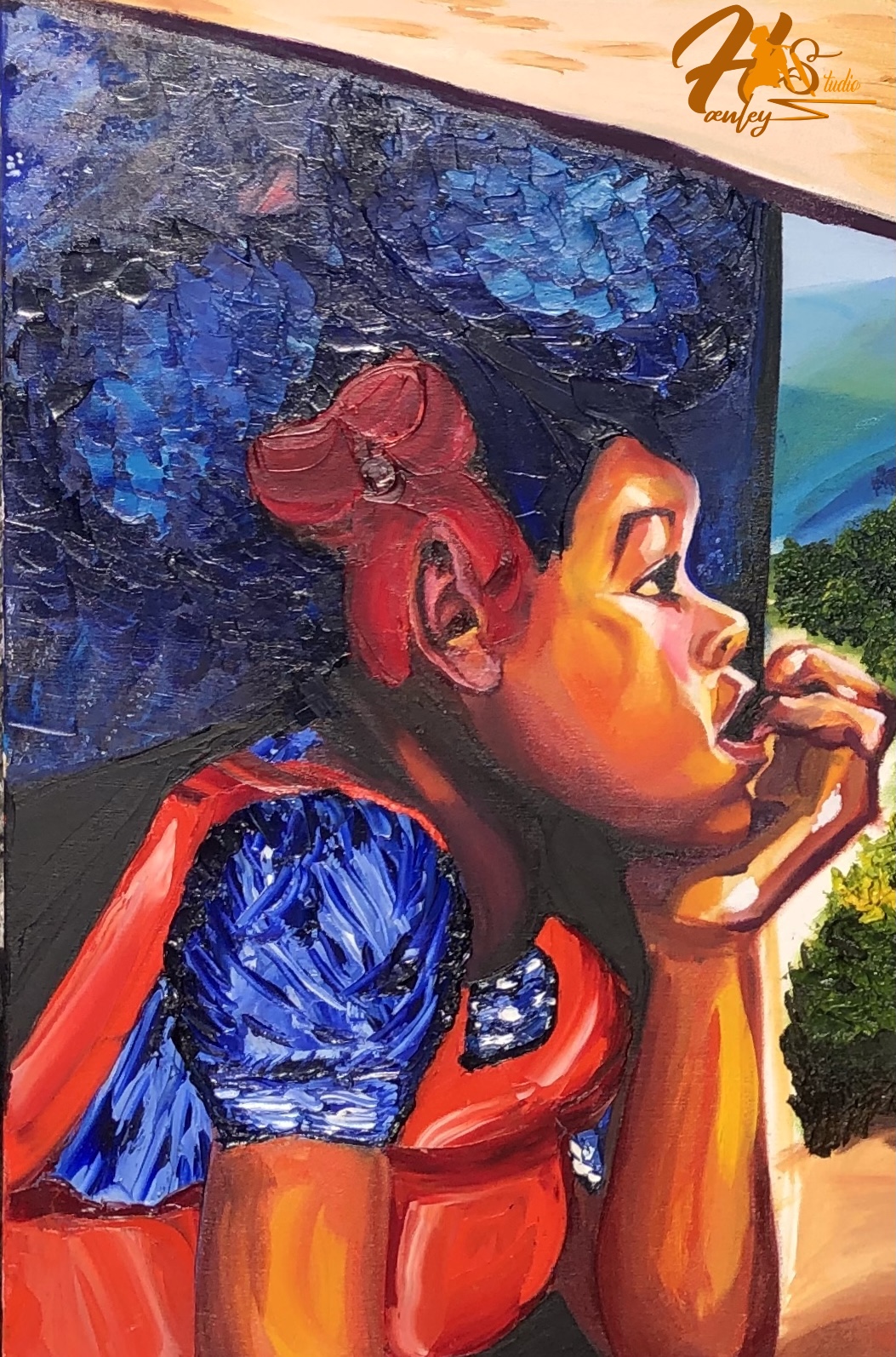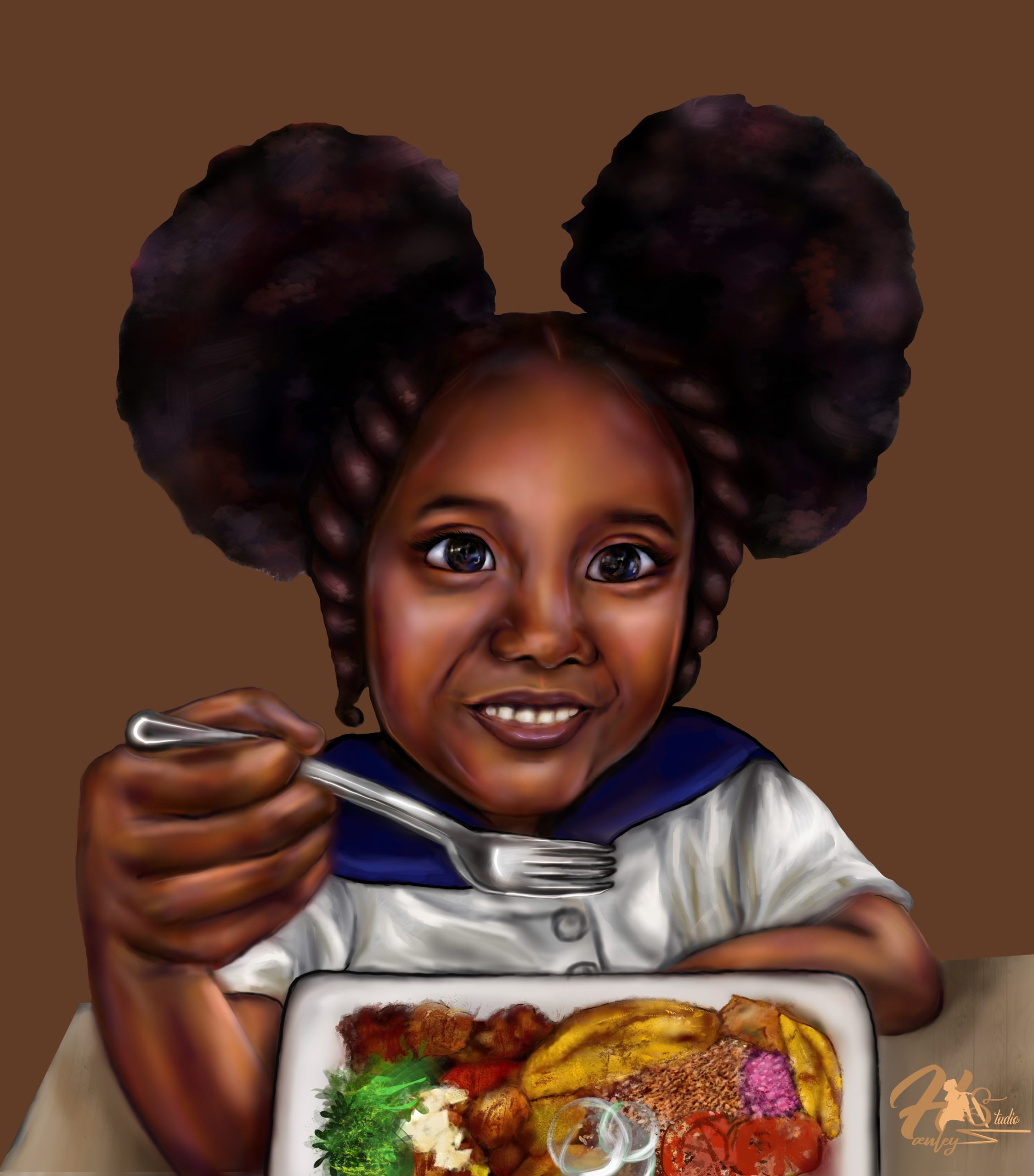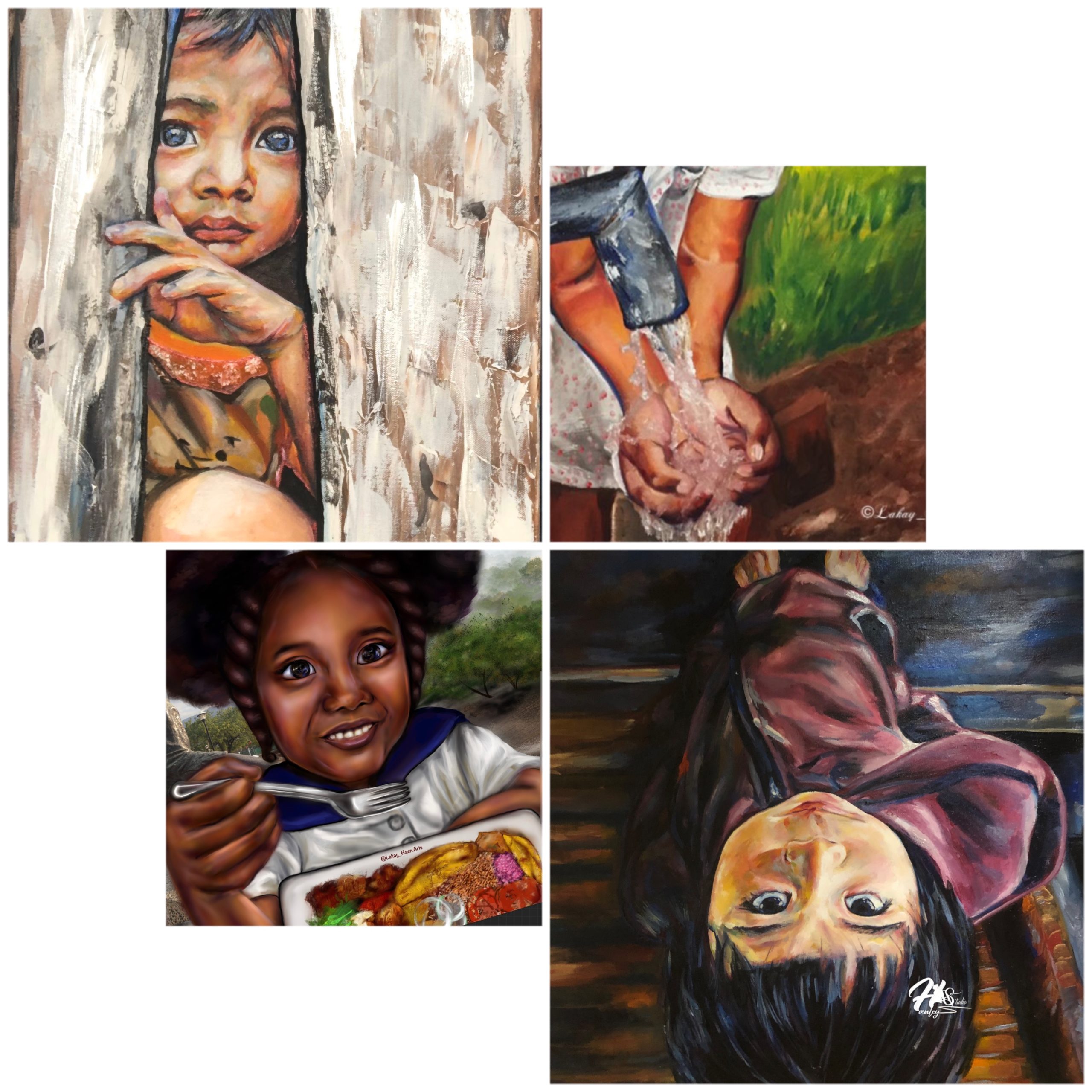Boom!
New environment, new country. New language, new neighbors.
Plot twist you’re 8 yrs old, clinging to your mom who’s in the same predicament. This is not a movie, it’s real life.
“Mom! Where are we?”
“We’re at the entrance gate of the “Land of freedom & opportunity “
“Mama, why do I feel so caged?”
Ever moved to a new location and felt out of place? Did you feel isolated one way or another? Try juggling this experience at 8yrs old.
The land of freedom and opportunity seem more like a dream deferred for many. We’re at the height of an unprecedented immigration crisis in the U.S. There’s untold human rights violations conducted daily at detention centers across the U.S. where vulnerable groups are being detained for their quest of refuge – because of their undocumented status.
Goal
This article is to be one of many focusing on the subject of immigration and supporting children of immigrant families. It moves away from the crisis at the borders to conversation regarding integration of immigrant children in our society. It weighs heavily on my own personal experiences; however, I do want to make it clear that immigration is a multifaceted issue. Discussions on immigration can be approached through a number of different angles and arrive at different conclusions or calls to action. While I speak on my experiences, let’s be aware that there are children facing great threats to their safety and security on the daily.
We need to have a special focus on immigrant children.
This article is a call to action!
Why does it matter?
The number of immigrants and refugees settling in the U.S. has risen exponentially in the last few decades. According to a Pew Research article, there are more than 40 million people living in the U.S. who were born in another country. Researchers point out this accounts for more than one-fifth of the world’s migrants. It’s more than likely that you reading this article have direct experiences with immigrant families or may come from an immigrant family yourself.
Data from the Migration Policy Institute shows as of 2018-2019 there are about 18,416,000 children under the age of 18 who are “foreign-born” or lives with at least one foreign-born parent. In the article, researchers defined foreign-born as individuals who are U.S. citizens by naturalization and those who are not U.S. Citizens. The category foreign-born accounts for nearly 25% of children in the U.S. under the age of 18. Among immigrant families, surprisingly, research has shown that nearly 88% of children in these families are U.S. born.
In New Jersey, my home state, 40% of children under the age of 18 are part of immigrant families. These are significant numbers! It’s wise to analyze ways in which migrating affects children. This is not a research article but a reflection on my own experiences. Moving forward, I aim to use my work and experience to support immigrant families.
My Story
I was a first-generation immigrant child. I came to the US from Haiti at a ripe age of 6 1/2. Many of the points discussed throughout this article largely reflect my own experience in migrating to the U.S.
Few key facts that distinguished my experience off the bat:
- I had an intact nuclear family
- My father moved first and my mother and I followed 7yrs later
- My family had permanent residency
- We migrated for the hope & promise of economic security
- There were waves of migrants in the U.S. from my ethnic group, my country
- There were established communities of people from my ethnic group, my country
This list can continue. Again, there are countless other variables that can impact the experiences of immigrants in the U.S. from dangers of political and religious persecution to domestic violence and so on.
Let’s take a trip back to 2000 from the lens of a child under 10yrs old.
Obstacles
Sense of belonging

Migrating to a new environment, another country at that, alters your sense of belonging. It’s a complete shift of what you are typically accustomed to and you are forced to choose whether or not you want to adapt to your new environment. For me, the choice was – how far do I assimilate. In this context, it entails a sort of bargaining. How much do I give and how much to take in? What do I preserve and what do I let go? Using this breakdown method, I’m going to process my experience below through this framework. Perhaps you can relate?
Language
Immigrant children need proactive encouragement to help them balance being bilingual; encouragement to learn English and preserve their native tongue.
Took in
I migrated from Haiti. I didn’t come from a socioeconomic status that required us to learn English nor was it at the time taught in the school I attend. So, the English language was completely foreign to me. I can hilariously recall telling my father I spoke the language and proceeded to impress him with my gibberish. All jokes aside, the moment we stepped in the airport I was quickly silenced!
My first assignment from my father who lived in the U.S. before me was to learn English as fast as I could so I could teach my mom, since she would be the one to handle most household matters.
Okay cool - challenge accepted!
I was put on a diet of Tri-state area Channel Thirteen’s children (PBS Kids) program. We had basic cable – PBS Kids, later added Animal Planet and the news channels were my only access to TV. I mastered common expressions and picked up many phrases from the television programs. I was given phonic books and activities and I put my skills to the test!
My mom soon gave birth to my only sibling and I quickly adapted to a new role – the young interpreter. As a low-income family, we didn’t readily have access to babysitting services – so I often accompanied my mother to different places as she bustled to adapt. I attended her doctors appointments and tried my best to interpret. I also attended some of her late afternoon English literacy classes and we over some assignments with her. Looking back, what I’m most thankful for is that I had my mom by my side as we adjusted to our new life.
Let go
Haitian “Kreyòl,” was my first language. It was the primary language we spoke back home. My dad passed what I like to call as a “English speaking law,” I was not allowed to speak Kreyòl at home. I was instructed to speak English and teach my mom the things I picked up from school. As she heard me speak, she would also learn with me. While it worked in favor of my mother, I began to lose my ability to speak Kreyòl in my native accent. While, I understood the language perfectly, somehow my tongue began getting heavy whenever I tried to pronounce my words. To make matters worse, many of my peers – those who were Haitian immigrants like myself – disdained our culture; you were publicly humiliated if you were heard speaking Kreyòl – so there went my motivation. It wasn’t until my brother was born and my mother’s determination to speak to him only in Kreyòl so he could retain the language, that I picked up the interest to relearn. My American born brother, still to this day speaks Kreyòl with better fluency than I, a Haitian born naturalized immigrant.
Food
 Children in general can be picky eaters. Imagine being immersed in a whole new cuisine? Immigrant families need support adapting local cuisine and connections to markets that allows them to make meals they’re accustomed to.
Children in general can be picky eaters. Imagine being immersed in a whole new cuisine? Immigrant families need support adapting local cuisine and connections to markets that allows them to make meals they’re accustomed to.
Took in
Was food in America just bland? I’m an island girl, I’m accustomed to our rich spices and a variety of fresh grown food. Food just doesn’t taste the same here in the U.S.! I’m not sure if it’s due to the fact that so many of our products are processed and mass produced. Perhaps flavor is lost in the process. The first few years were hard to adapt; from poultry to fish to rice to fruits, nothing tasted the same! I’m thankful for the international markets that provided some familiar spices that helped us have a touch from home, but it was still not the same. I must note, knowledge of those markets came with time. I am grateful to those who pointed these resources to my family, without them – we would simply not know!
Let go
I resolved to let go of my expectation of food tasting like back home. I traveled about 4 to 5 times since moving to the U.S. and each time, I went with the anticipation that I’d eat to my heart’s delight. My goal was to burnish the flavors in my taste buds and relish the good times enough so I can retrieve the memories when needed.
Climate
Having the right attire makes a difference! Children of immigrant families may need support in getting access to appropriate and affordable clothes.
Took in
Going from a tropical climate to one that experienced all four seasons was not an easy transition! Luckily my dad who lived in NJ before us, forewarned us of winter and helped us adjust each seasonal change. Fall and winter season are non-existent in my country so it was an eye-opener. “I’m Cold! – Mwen fwèt,” took on a whole new meaning.
Let go
I left the wardrobe of nearly year round summer attire behind. In my young eye, all those fluffy dresses were sent back to where they belonged – to someone else!
Freedom to travel – Kept indoors
Fear of the unknown can be a lived reality. Immigrant families need resources that help them learn about their new locations. Information on local transportation systems, public libraries and parks, places of worship and community centers, local news channels, language lines and legal service assistance to list a few are needed.
Took in
Many of my childhood highlights in the U.S. were traveling in the backseat of my parents’ car and site-seeing through my window view. Landing in NYC was exciting! I was never exposed to so many lights growing in my small community of Croix-Des Bouquets, Haiti. It was amazing! Looking back though, we were limited in the places we visited – we lacked the knowledge and the opportunities.
Let go
I missed the freedom of being able to leave my house and be free to explore, run around and be a kid. My world suddenly shifted from having the freedom to play with my neighborhood friends in open fields and be that great, brave explorer of my town to being stuck in a 3rd-floor apartment. Winter months were the worst! All I could do was stare at the cold wet white stuff they called “snow” out my window. With my dad out working, my mom and I were limited to going to places based on the NJ transit bus routes. Our trips were often just to the designated locations and then straight back home so we wouldn’t get lost.
Challenges faced in School
The one place I could expect to interact with others in my cohort was at school. Pursuing education is an ideal vehicle to improve oneself. It can also present a plethora of challenges, especially to immigrant children.
First, you’re surrounded by strangers that look little like you! Imagine this – you’ve lived your whole life with people that simply looked like you. People around you were from the same ethnic background; they had hair texture were similar to yours and for the most part you were accustomed to the range of skin tones.
Second, back home, everyone spoke your language! You didn’t leave home thinking – “what if they can’t understand me, what if they make fun of my accent, what if they talk behind my back?” These can be weighty matters in the mind of a young child. Immigrant parents need support in learning about their children’s school system and it’s curriculum. They ought to be made aware that they’re entitled to interpretation services to help them communicate their needs.
My first White teacher
My family migrated and moved into a predominantly black neighborhood. Despite this fact, the school I attended 70% of my teachers were non-black. Funny enough, I didn’t think of myself as black until I moved to NJ. I quickly picked up new self-descriptive words – I am a dark-skin, Haitian – “black American.”
After my first few weeks going to school, my mother asked if she could come in and observe. She had a mission in mind. She was growing concerned why I was forming a dark line below my lower lip. I had a nervous habit that became my defense mechanism! My mother hilariously recounted the story of how I would bite my lower lip whenever my white teacher, Ms. Pam would come near me. I would just stare at her whenever she attempted to communicate. Ms. Pam! I was just awestruck of how beautifully different we all were! I never before saw a blond-hair, blue eyed person in real life! It was almost scary!
Immigrant children need support in creating their identity in addition to learning about cultural diversity. People are different and it’s okay to have different physical features.
ESL
Immigrant children run the risk of being underestimated by teachers in our school systems. ESL stands for English as a Second Language. School without a robust ESL program can hamper the education of immigrant children. I was often pulled out of regular class and put in a smaller group setting. Depending who the teacher was for the day, I knew whether or not I’ll be going through rigorous instruction or coloring for the day. While coloring turned out useful for me later in life, my father was livid when he found out. He made sure school administrators knew he didn’t send me to school to just color!
Bullying
Ever lived a paradox?
For immigrant children, in the phrase below replace “Haitian” with your native cultural identity and you can match my sentence:
Too Haitian to be just American Too American to be just Haitian
I didn’t fit in with peers in both countries and that made me an easy target. This can be a harsh reality in the eyes of a young child. The blissful life of an easy-going childhood was suddenly swept away. Being unable to relate to those around me, it’s no surprise I withdrew – observing from the outside in.
School was a mandatory obligation and a fertile environment for bullying that seemed nearly impossible to escape. I was bullied in school and it was hard to tell my parents. My parents were struggling to adapt. My mother had a newborn and couldn’t speak the language well enough to discuss the situation with administrators and my dad simply didn’t have the time. I had to fend for my own and oftentimes felt I had no voice to speak out.
It was an interesting mix, most of the taunts came from people who resembled me but didn’t speak my language or could relate to my culture. Most of the bullying came from inaccurate stereotypes of my background, my accent, and my appearance.
I heard everything from
“Haitian booty scratcher” to “Haitan eat cats” to accusations of witchcraft, “voodoo” etc.
Blame
In my young mind, I sometimes blamed my mom. She was the one who dressed me, she was the one who put those ribbons in my hair. I learned real quick to undo the ribbons and stuff them into my backpack. I couldn’t undo my hair and reform in the styles of the other girls so had to bear with the pulling of what other children called “dookie braids.” Humiliation was an understatement and it shot at my self-esteem. Back then, the bullying made me want to isolate myself from my culture but it clung to me like an unwanted beauty mark.
To my young self – I would say:
“Dear black girl, your hair is stunningly versatile – wear it how you choose!
I love it,
When you bounce up & down
Move you head side to side
Just to hear that clicking, swishing sound when the beads on the end of your braid meets the next.
Rock the ribbons your Mother used to dress your chunky braids … when you’re older you’ll dress them with golden strings ✨
Accountability
I was bullied in school and my school leaders did nothing to intervene. I was new to the country and my attempt to speak English and try to defend myself only led to further taunts. Did all of this happen under the rug? Where were the teachers? Did they not notice? My parents were unable to support me, they didn’t have the knowledge of how to advocate on my behalf. But I got a break! Eventually, there was a light at the end of the tunnel. It was exhausting having to defend myself but somehow I made it through and moved to a new town, new school.
Schools need to institute programs that promote curriculum centered around learning and experiencing different cultures. School boards must embrace their immigrant population. Initiate campaigns that promote growth and learning – it’s more than a political action, this can literally change the learning environment of young immigrants.
Economic hardships
Many first generation immigrant families live below the federal poverty level. Research data confirms, there’s a significantly higher proportion of 1st generation children living in impoverished conditions than 2nd generation families or non-immigrant children. This is not hard to imagine. Ask yourself, why did these families leave their countries in the first place? A common denominator is the pursuit of economic opportunities. These families often come to the U.S. working their way from the bottom up to forge a life for themselves.
To complicate matters, often time – those who have migrated to the U.S. are seen as the economic resource lighthouse for their family back home. They are seen as the ones who would financially uphold the burdens of the extended family. My family was no different. It’s a challenge! While others may see you’ve “made it” simply by entering the U.S. – it’s difficult for them to fathom the upward climb on the socioeconomic ladder. I celebrate my family! We wouldn’t be where we are now without their sacrifices.
How can we make a difference?
Let’s form a circle of support around children of immigrant families!
We often hear that our children are our future leaders of society, while this may be true, let’s not forget their importance right now! They are our kings and queens – crucial members of our society in the present and not just 20yrs from now. We have an opportunity to make a difference now – while their characters are forming.
Community centers
Let’s build or raise up community centers with a mission to help establish and support displaced families. Share keys of success, methods where these families can rise up the socioeconomic ladder. Create cultural centers that have international markets and celebrate cultural heritage.
Educate! Educate! Educate!
There are many things my family missed out on, simply because we didn’t know! Share resources.
- Help us practice our English, encourage us to learn the language
- Provide English literacy materials and direct us to programs.
- Help us navigate the school system
- Direct us to job training exercises
- Help us locate jobs
- Teach us public transportation routes
- Help us discover cultural centers
Many immigrant families have a limited world view. People of any age can experience homesickness to varying degrees. One way you can help tackle this is to show us around. Take the children to nearby parks. Take them apple-picking, hiking and other outdoor activities. Show us our environment and teach us new traditions. Give us encouraging tips on how to make where we’re currently located “our home.”
Who would’ve thought that Jersey had so many neat places to visit? I’m sure your area has awesome spots as well.
Volunteering
Are you a product of immigration? If you live in the U.S. and you are a member of the first nations – those native to our land – then yes you are! Now the question is, how far removed are you from an immigrant background? If you are an adult and are a 1st, 2nd or 3rd gen how are you making a difference? Have you incorporated giving back to your community in your agenda?
One way you can meet this goal is to volunteer:
- In your immediate community
- In your native country or the countries where your parents originate.
- An international community center
Your voice matters! Your experiences matter, seeing where you are now in life can be an inspiration for others on this journey. Sharing your story builds up your community!
Keep a vigilant watch
Children are vulnerable groups who need to be protected. How much so, children of immigrant families? For the ones who are balancing life while adapting to cultural and linguistic changes.
We unfortunately live in a society full of predators. The opportunities to be taken advantage of are endless. Many of our immigrant families live below the national poverty line, we must remember economic hardship are among the many obstacles they face on a daily basis. This increases the risks of exploitation for economic stability. If you hear something, say something that can help liberate a family! Check up on your immigrant families. Ask questions. Ask the children how they’re fairing in school. You may be the advocate on their behalf in place of their parents who may lack the knowledge or opportunity.
You never know how you can be an ally unless you position yourself.
Embracing a new identity
If you come from an immigrant family. Embrace your multifaceted identity.
As for me, I am a Haitian American
Naturalized, Haitian born- American raised black woman.
Project Goals
I’m am challenging myself to the mantle.
I’ll revisit the points & suggestions addressed here in my own work in the coming years.
I’ll provide an update to keep myself accountable.
Check out the beginnings of my “borders” project.
I’m sharing my story, are you?





